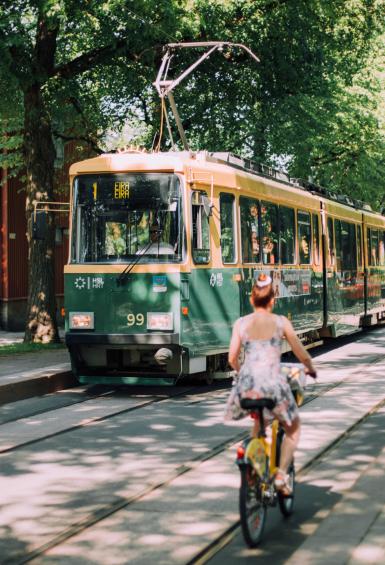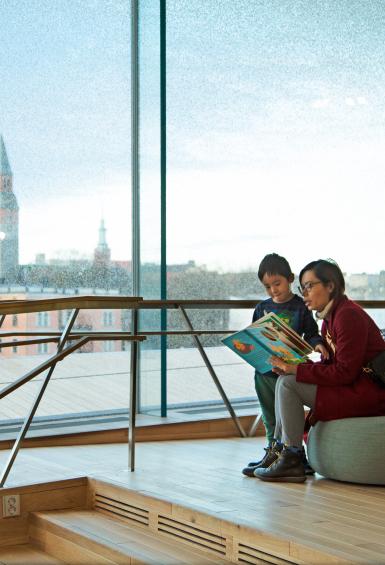
#1 Artek
Design comes first in Artek's Helsinki office. Artek is an internationally renowned design company that was founded by the young idealists Alvar and Aino Aalto, Maire Gullichsen and Nils-Gustav Hahl in Helsinki in 1935.
#2 Bob the Robot
Old industrial lots are currently being repurposed in Helsinki. One of the newest examples is the old bread factory in the Sörnäinen district which houses several spaces for dance schools as well as the advertising agency Bob the Robot.
#3 Village Works
Village Works hosts co-working spaces in the Helsinki city centre, Lauttasaari and Kamppi. The idea is to offer modern spaces, the support of a community, morning coffee and high-speed internet without workers needing to make a long-term commitment. Co-workers can use Papula's cozy sauna area in Lauttasaari for a discounted price.
#4 Hakaniemi
The Hakaniemi neighbourhood lies to the north of the Pitkäsilta bridge. The building seen in the photo is the Ympyrätalo (literally Circle House), a landmark of the area. The circle-shaped building was designed by architects Heikki and Kaija Siren. It was completed in 1968 as the headquarters of the commercial bank Kansallis-Osake-Pankki (KOP). These days the building houses several office spaces, including those of the City of Helsinki Urban Research and Statistics Unit.
#5 A-lehdet
The media house A-lehdet in Helsinki's Kulosaari district has a fireplace in winter and a seaside terrace perfect for BBQ lunches in summer. The building was designed by Kouvo & Partanen Architects. The architectural office won the bid for the design of the building in 1998. A-lehdet was founded in 1933.
#6 HTC Helsinki
The HTC Helsinki office complex was completed in 2001-2002 in the Ruoholahti district. The buildings rise up from the ground right at the seashore. Their architecture imitates forms of cranes and the harbour. The complex houses dozens of companies of different fields and sizes. The shared premises include restaurant, meeting and seminar spaces.
#7 OP headquarters
OP Financial Group's headquarters in Vallila represent a new line of modern office architecture where employees do not have assigned desks. The construction of their ‘campus’-style headquarters, which involved extensive construction of new buildings as well as the renovation of existing buildings, was completed over a four-month period in 2015. The new building complex was designed by JKMM Architects.
#8 Kone Building
The Kone headquarters in Espoo's Keilaniemi district is one of the best-known and tallest office buildings in the metropolitan region. The building is 73 metres high and it was designed by professor of architecture Antti-Matti Siikala. The building was completed in 2001. On a beautiful day, the top floors even reveal a glimpse of the Estonian capital Tallinn.
#9 Fredriksberg
Fredriksberg offers creative and exhilarating co-working spaces in Helsinki's Vallila. The spaces are intended to be a kind of wonderland where both office workers and visitors can work, eat and drink. The area is a former machine shop that has now been converted into a whole new city district.
#10 Studio Aalto
The world-renowned Finnish architect Alvar Aalto (1898-1976) designed a residence and studio for himself in Helsinki's Munkkiniemi in 1955-56. The two buildings are a stone's throw from one another. Studio Aalto is open to the public as a museum with original furniture by Aalto. And, even though this work space has a very specific aura, many people in Helsinki can enjoy a similar kind of home office vibe.




